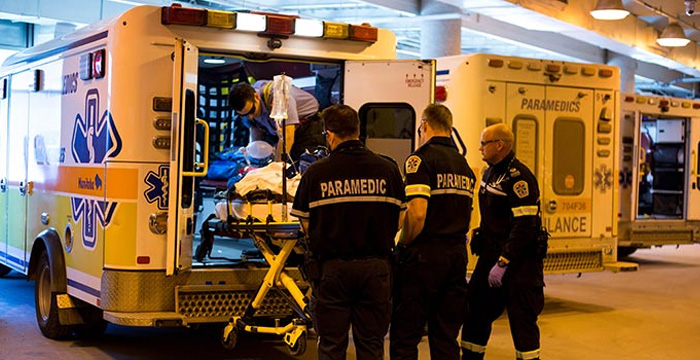More front-line, full-time paramedics are working in communities across Manitoba, fulfilling the province’s Budget 2019 commitment to further enhancing rural emergency medical services.
“When people are experiencing a health emergency, they need to know skilled paramedics are available to provide care as quickly as possible,” said Health, Seniors and Active Living Minister Cameron Friesen. “This investment ensures more consistent, reliable care is available to communities across northern, western and southern Manitoba when it’s needed most.”
In Budget 2019, the Manitoba government announced a $1.4-million investment in an additional 35 full-time equivalent rural paramedic positions, increasing to $2.8 million in subsequent years. The majority of positions have now been filled, with work underway to have remaining positions in place by mid-January, the minister added.
These new paramedics will be providing emergency response services (EMS) to communities such as Flin Flon, Snow Lake/Cranberry Portage, Russell and Swan River, and provide cover to shifts across the Southern Health-Santé Sud region.
When all the new hires are in place, Manitoba will have increased EMS funding by $12.1 million, allowing for the creation of an additional 149.2 full-time equivalent paramedic positions. Friesen noted these investments are in addition to the government’s most recent commitment to hire an additional 80 full-time paramedics over the next four years.
“Building up our staffing levels will have a significant effect on our health system’s reliance on on-call staff,” said Darren Baker, director, emergency response services, Shared Health. “These additional positions ensure our paramedics are well-positioned throughout the province to deliver professional emergency medical care from the moment they reach a patient.”
The minister said the investments in new paramedics build on the government’s commitment to enact recommendations made in the 2013 EMS System Review. The review recommended an overarching provincial standard for emergency medical response, which is to respond within 30 minutes 90 per cent of the time to 90 per cent of the population.
Manitoba uses a globally recognized, flexible deployment model to shift EMS resources as they are required throughout a region, ensuring timely responses to emergency situations across rural Manitoba. In 2018-19, 93.33 per cent of EMS calls in rural and northern Manitoba (outside the city of Winnipeg) were responded to within the provincial response time standard, with 58.69 per cent within nine minutes, 16.14 per cent within 15 minutes and 20.49 per cent within 30 minutes.
As part of Manitoba’s ongoing health system transformation, Shared Health is working closely with service partners and regional health authorities to develop a new model of care and service delivery. This will ensure response time targets are achieved and supports are in place to ensure paramedics are able to work to their full scope of practice, the minister said.
Since 2016, the Manitoba government has worked diligently to develop a 24-7 paramedic workforce of skilled professionals and enhance emergency services including:
- giving the paramedic profession the right to self-regulate under The Regulated Health Professions Act;
- purchasing 65 new ambulances, which will represent a refresh of approximately one-third of the province’s overall fleet when delivered; and
- reducing ambulance fees in the past three years by approximately 50 per cent to $250, making emergency care more affordable and accessible.
“The progress made to paramedic services in the last three years has greatly benefited both the public and paramedics in this province,” said Rebecca Clifton, administrative director, Paramedic Association of Manitoba. “This government has recognized that Manitobans need a 24-7 paramedic workforce and, while there is more work to be done, we are very pleased with the advancements.”




